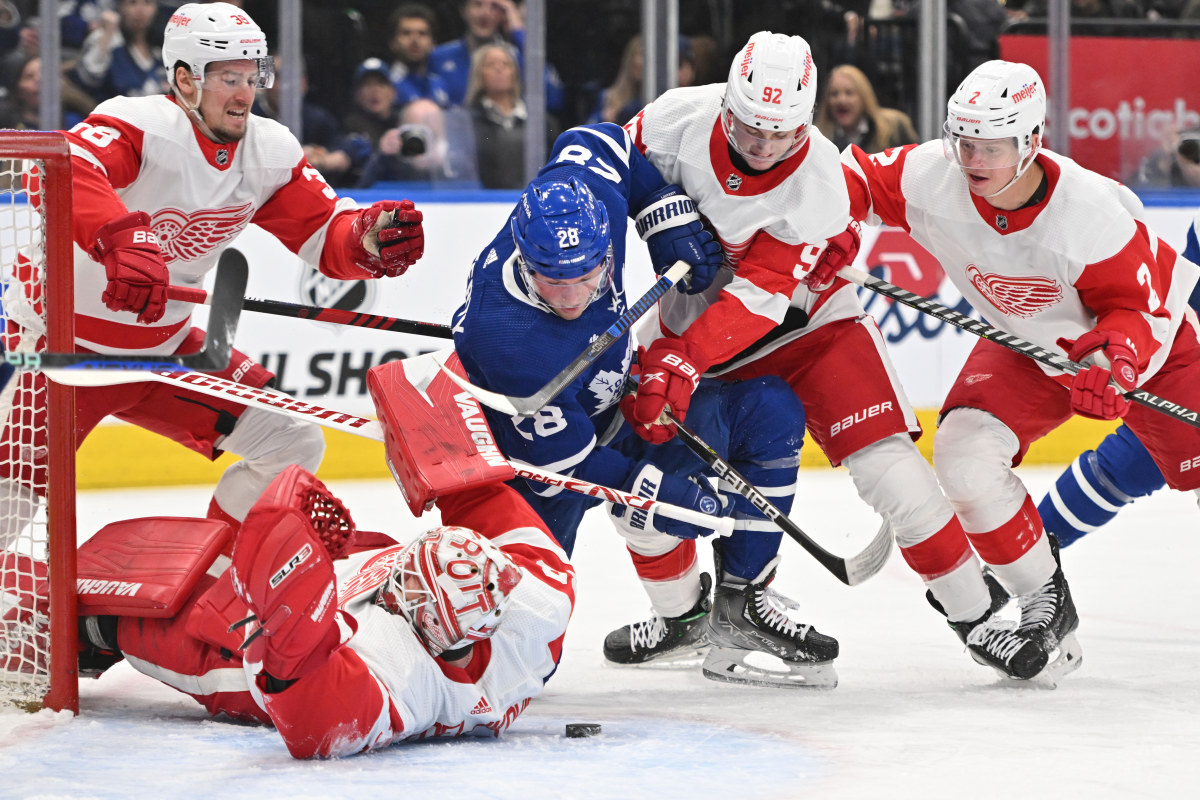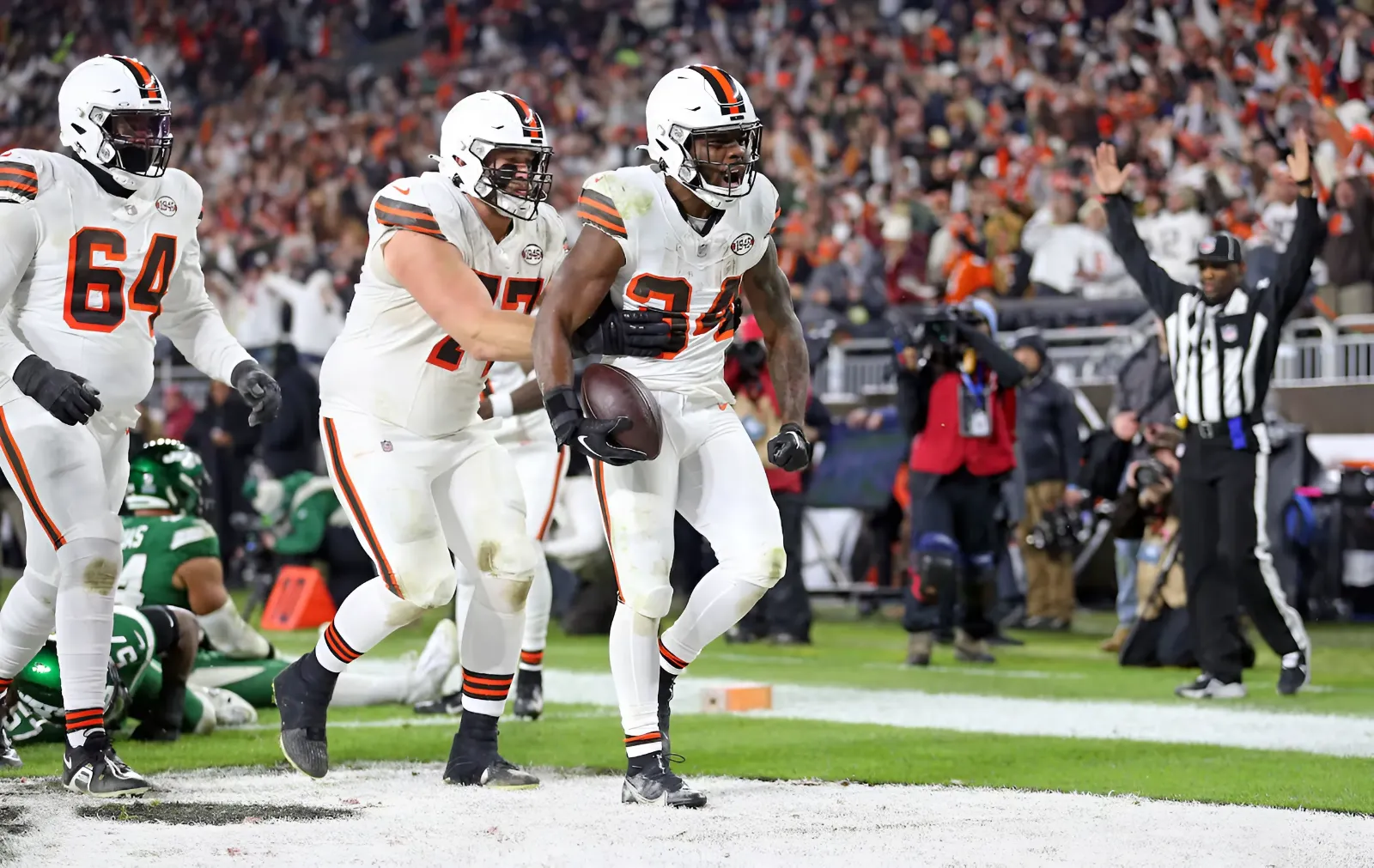At this stage of the rebuild, the Detroit Red Wings have a wealth of top prospects in the pipeline. They’ve got highly regarded centers in Marco Kasper and Nate Danielson. Sebastian Cossa and Trey Augustine are both goalies of the future. On the blue line, they’ve got a tough customer in Simon Edvinsson and an offensive dynamo in Axel Sandin Pellikka. If they all turn out as NHL level players, the Red Wings could be stacked. This is ignoring the later picks that are turning into accomplished prospects, too, like defenseman Albert Johansson, forward Carter Mazur and NHL-ready Jonatan Berggren.

But which of these prospects is the most important? Or asked another way, who does Detroit need to pan out the most?
This question is not a simple ranking of which prospect is the best, but rather which can be the greatest difference maker. The Red Wings are in a position where they could use help from all of these prospects. However, the answer of who's most important can reveal areas where Detroit needs to expend more resources for contingencies, as well as predict which prospects might have an outsized impact by the time they reach the NHL.
I'll admit, this is a question that I have grappled with. On one hand, assigning importance is incredibly subjective; I'm just begging to be wrong here. On the other hand, it's a valuable mental exercise to figure out whose impact is needed most.
In terms of need, the Red Wings are light in a lot of areas. Perhaps one of the biggest is at center, where they need a consistent offensive creator outside of Dylan Larkin. When Larkin was out of the lineup, Detroit struggled to match up with opponents and especially to score. Another threat behind him — or, if the cards play out right, ahead of him — could alleviate this problem. Likewise, Yzerman spoke of the need for an “impact forward” at his end-of-season press conference as a need for the team. That could be a center or a winger, though the Red Wings’ best prospect depth among forwards lies at the center position.
“When Dylan’s out or we lose a significant offensive player, we need more depth to make up for that,” Yzerman said April 19. “And then again, we need to be better defensively to compensate as well. Nate Danielson (we) drafted a year ago and Marco Kasper the year previous to that. We think they’re good young prospects, really happy with how they’re coming. They’re not ready to play yet. I’m not ruling anything out for next year, but I think in time, we’re gonna be really solid down the middle.”
In terms of style, the Red Wings have two different players in Kasper and Danielson. Kasper is more of a gritty, two-way center whose impact isn’t always captured by a box score. Danielson is a speedster who can create plays in transition and overwhelm defenders. Both offer two different solutions to Detroit’s center problem.
But the Red Wings also have their issues on the blue line, where free agent signings fleshed out some significant depth but where most players lack the kind of takeover that an elite defenseman can offer. As much as an upgrade could help Detroit defend, it could also allow the Red Wings to lighten the load on Moritz Seider. The No. 1 defenseman shouldered one of the most strenuous workloads in the NHL this season, facing the toughest quality of competition in the league with the least help from his teammates. If Edvinsson turns into a shutdown defender who can flash offensively, or if Axel Sandin Pellikka can use his speed and playmaking to put other teams on their back foot, perhaps this could allow Seider to be a mismatch against weaker opponents, with less pressure on him to succeed.
And then, there’s the question in net. As much as the Red Wings got quality play out of Alex Lyon, and as much as a three-goalie system got them within a win of the playoffs, they don’t have an elite starter. In terms of the elite teams in the NHL, having a starter that can steal games is a major advantage, as Igor Shesterkin did for the Rangers against the Carolina Hurricanes. As much as the Red Wings are getting by with their current goalie solution, it’s not one that seems likely to translate with a more competitive team.
It seems as though Sebastian Cossa is the leading candidate in the goalie pipeline given his success in Grand Rapids. He set a franchise record with 19 straight starts without a loss, and his .913 save percentage and 2.41 goals against average during the regular season were in the upper tier of AHL goalies who played more than 30 games. He’s struggled a bit more in the playoffs, with an .890 save percentage and 2.70 goals against, but Cossa is still winning games with a 4-1 record in the postseason.
Out of all these prospects, I believe that Kasper is the most important of the bunch. This is more so a testament to his role and the way it meshes with Detroit’s needs rather than his individual talent in comparison to his peers. His type of two-way game — especially if he can score at a decent clip — is the kind of game that can make Detroit a difficult team to match up against.
The Red Wings can see this impact at the team level when they have Dylan Larkin versus when they don’t. His ability to control matchups at either end makes him integral to their success. Likewise, looking at the teams headed to the conference finals in this year’s playoffs, we can see the necessity for a talented two-way center. Florida has Alexander Barkov, Dallas has Roope Hintz and the New York Rangers have Vincent Trocheck. These talented two-way centers, the ones that get Selke nods and can be used in every situation, are the kinds that elevate their teams. This isn't to say that there's a script for NHL teams to follow to find success. However, these sorts of players have proven their importance to playoff success for decades. Even going back to when Steve Yzerman was a player, his ability to play a two-way game later in his career helped turn Detroit into a championship caliber team.
Scorers can put up gaudy point totals to help their team win. An elite defenseman can limit what other teams get. A stud goaltender can steal a game. But an effective two-way center can do a lot of the heavy lifting that makes a team a winner. They can not only steer defensive play in their own end through their positioning, willingness to block shots and embrace gritty battles, but they can also take play the other way and chip in on offense. They’re a mismatch, and Kasper could bring some of this style to the Red Wings should he make the roster one day.
Such talented defense is something Detroit is emphasizing this offseason, best encapsulated in a quote from Lyon’s exit interview April 18. As he put it, "I think every team in their maturation process comes to a realization that you can’t necessarily rely on goals all the time, and the ability to keep pucks out of your net is something you can control to a much greater degree." Kasper can accomplish the first part without sacrificing the second.
This doesn’t mean that other prospects’ contributions aren’t important to long term success. Danielson’s scoring and speed, Sandin Pellikka’s offensive creation, Edvinsson’s shutdown traits and game-stealing from Cossa and Augustine would be big adds for the Red Wings down the line. But in terms of who’s the most important to Detroit’s future, Kasper's two-way ability makes him the most important prospect in the cupboard.
Perhaps this is an indication that the Red Wings should draft more players with a two-way skill set. The Red Wings are mocked to select physical Norwegian winger Michael Brandsegg Nygard at this year's draft, for example, a player whose draft profile includes praise for his two-way game. Perhaps other picks could fit that description, too. At any rate, Kasper should not be overlooked in such a stacked prospect pool.

-1731310745-q80.webp)

-1721404179-q80.webp)